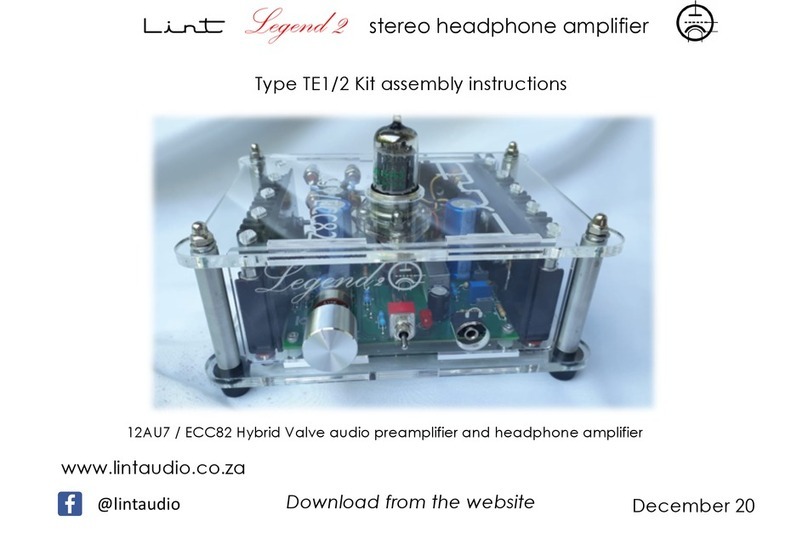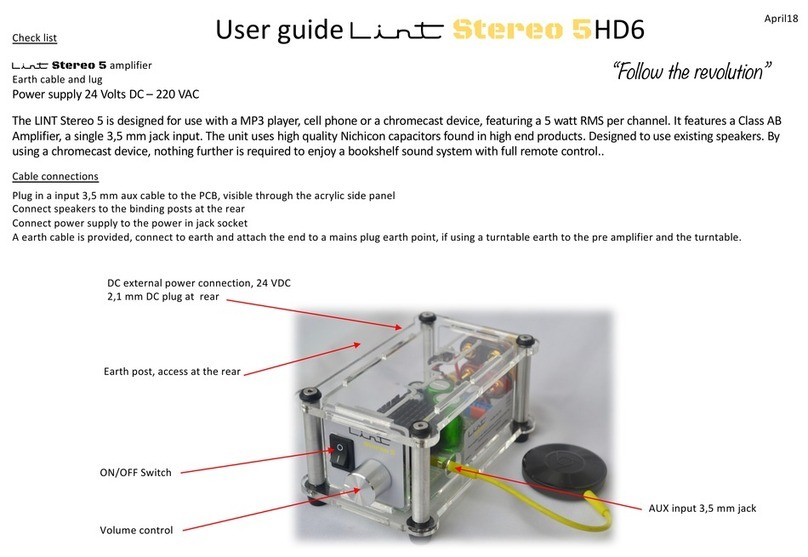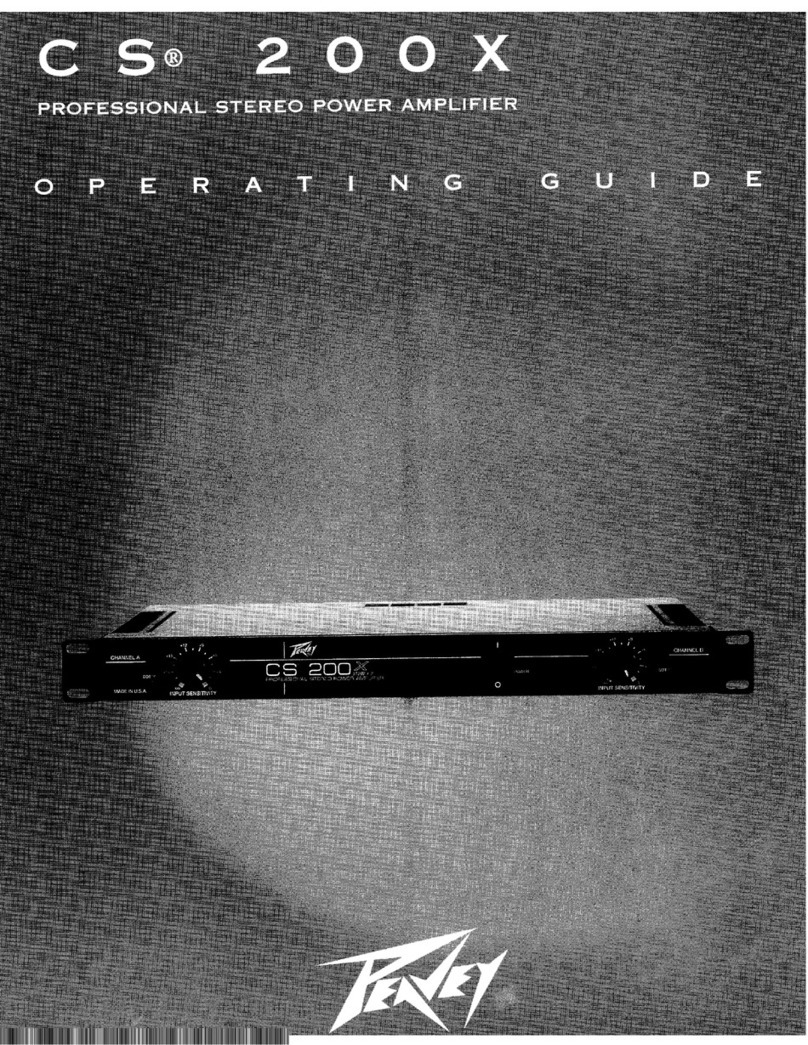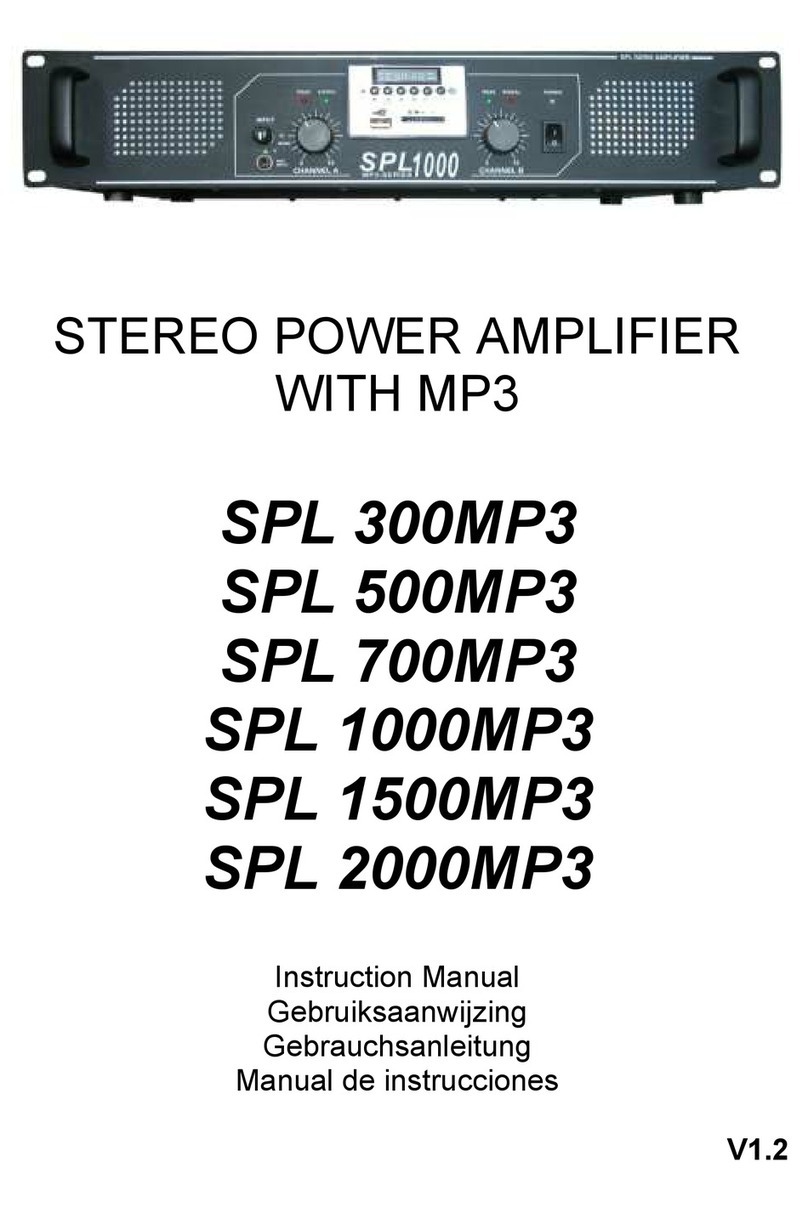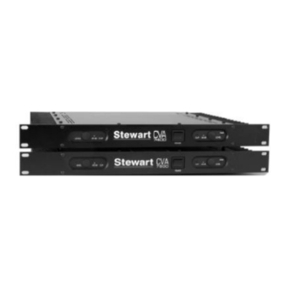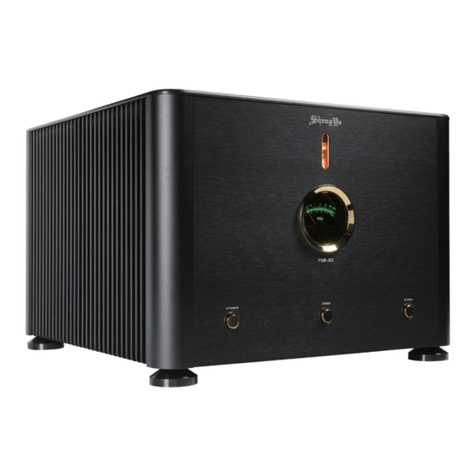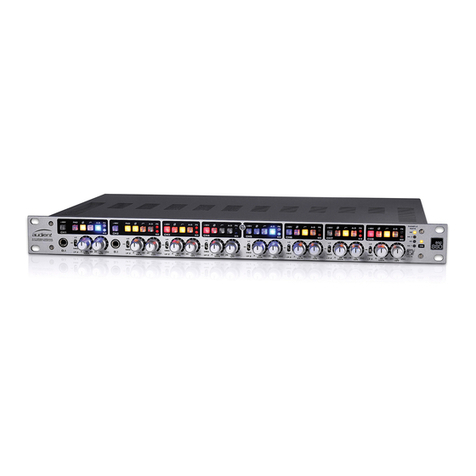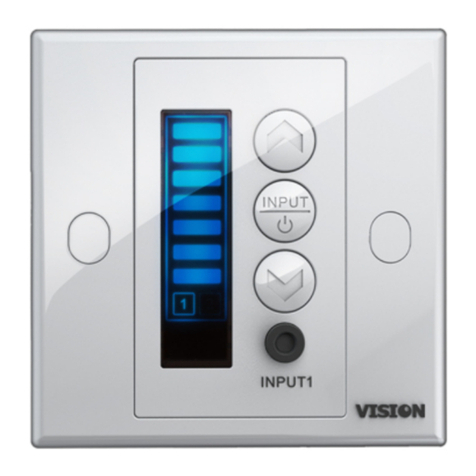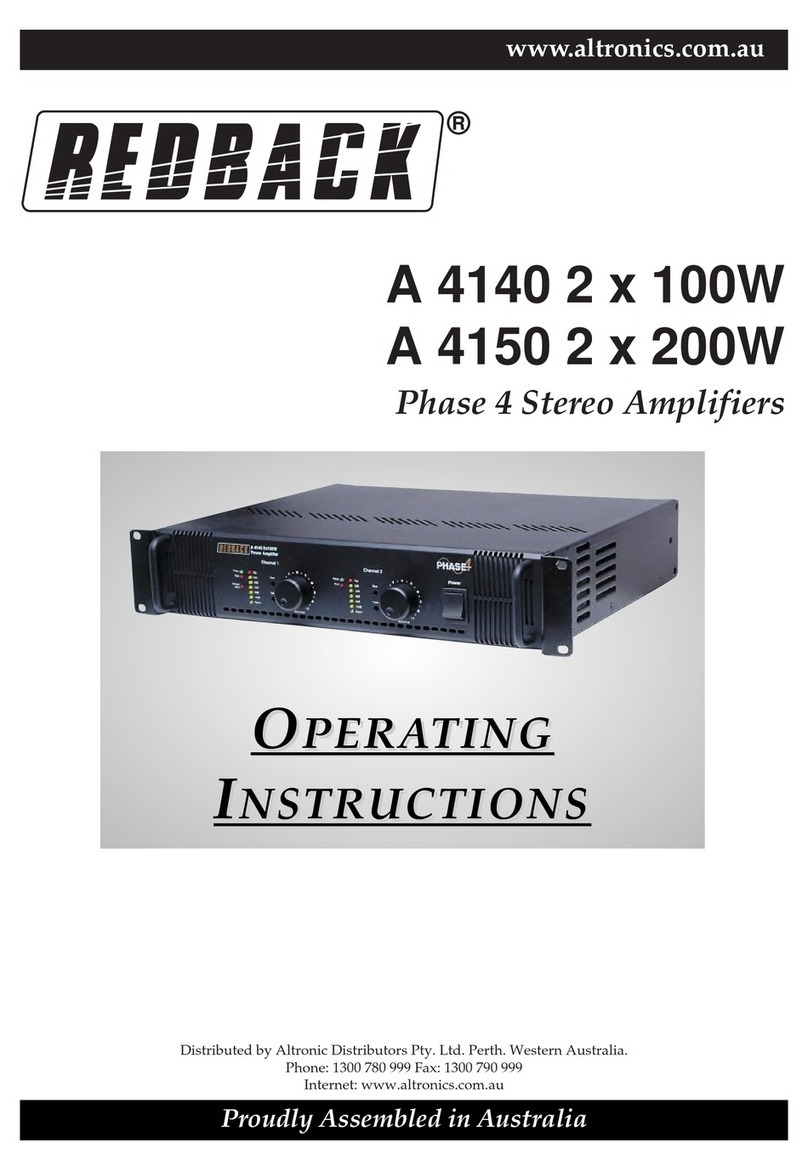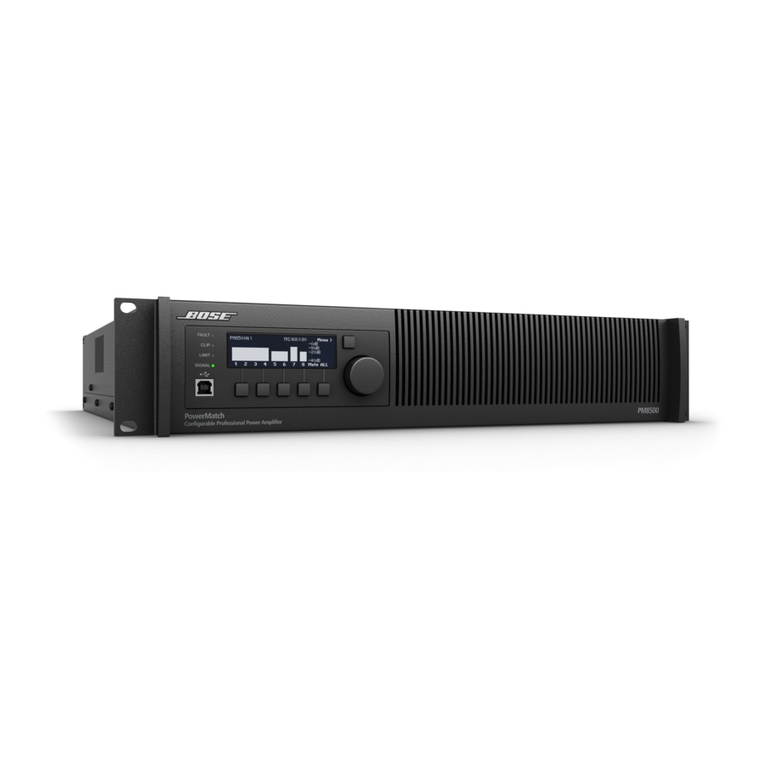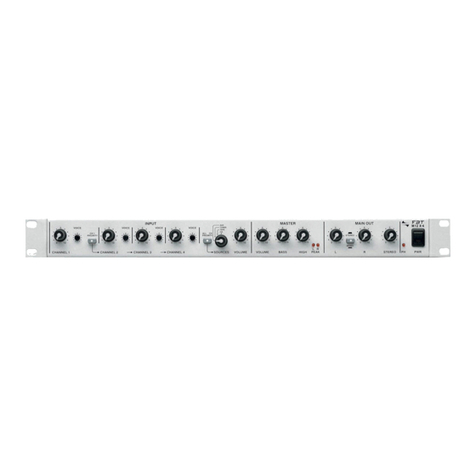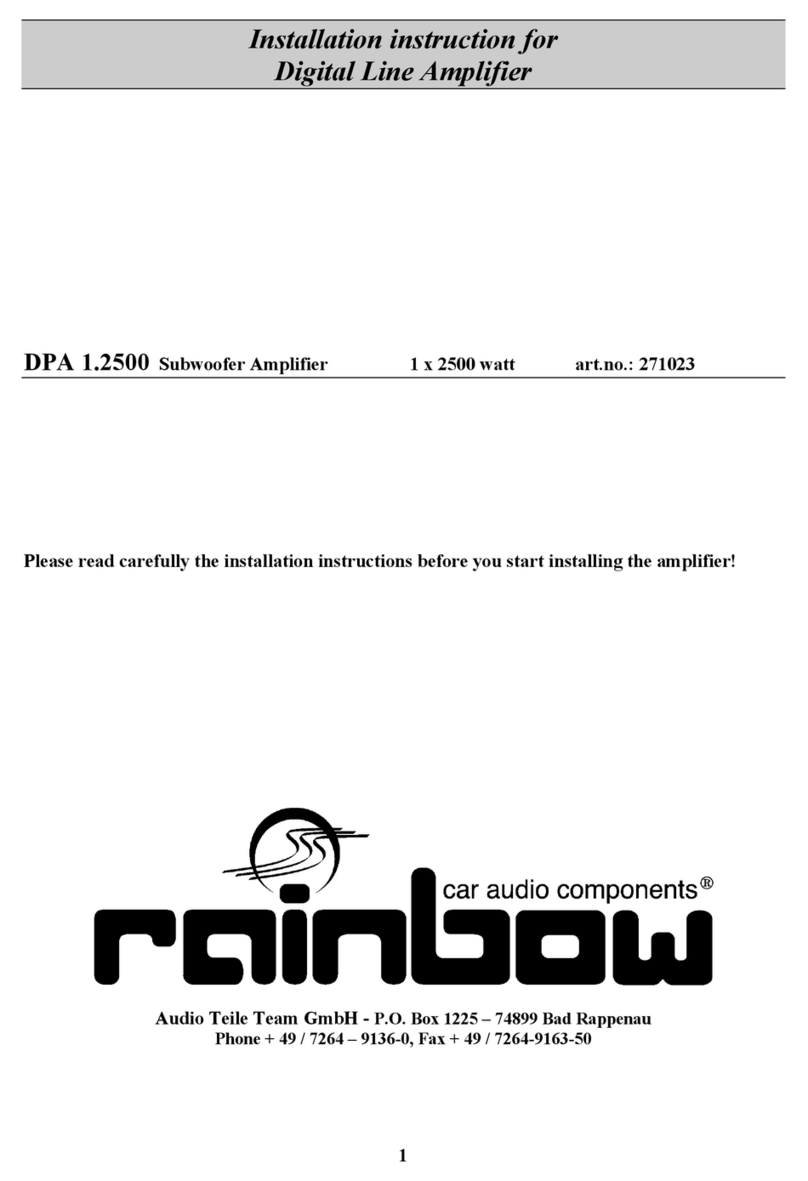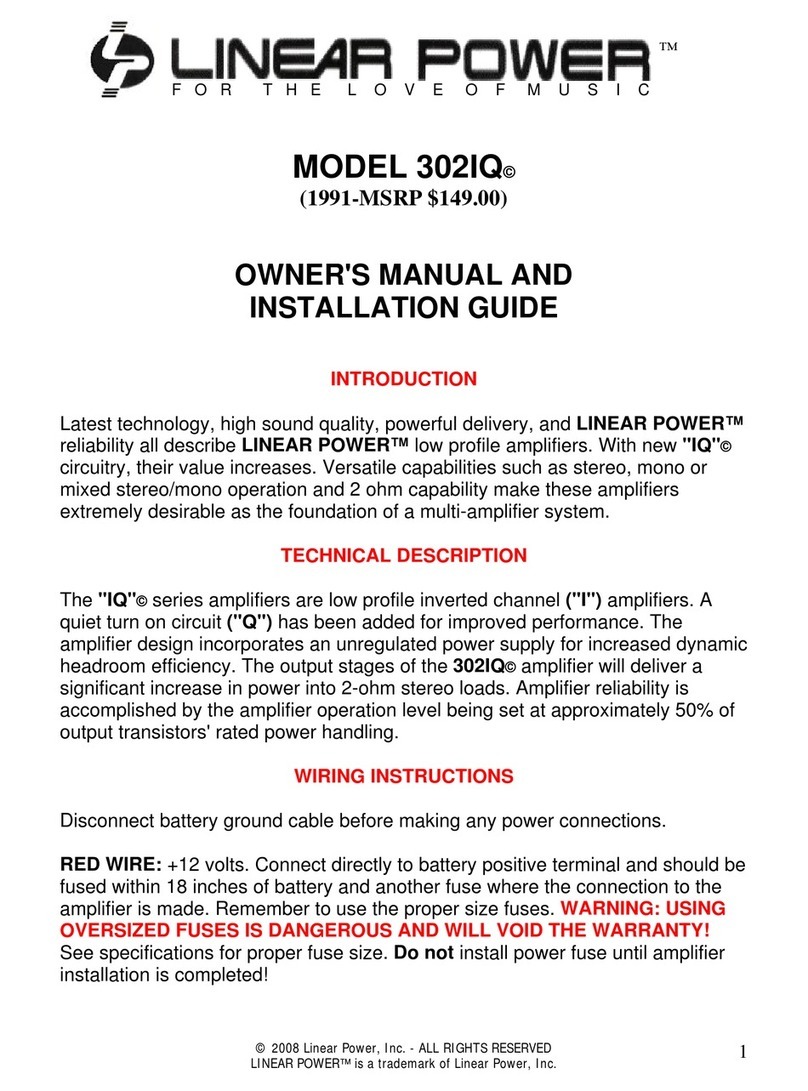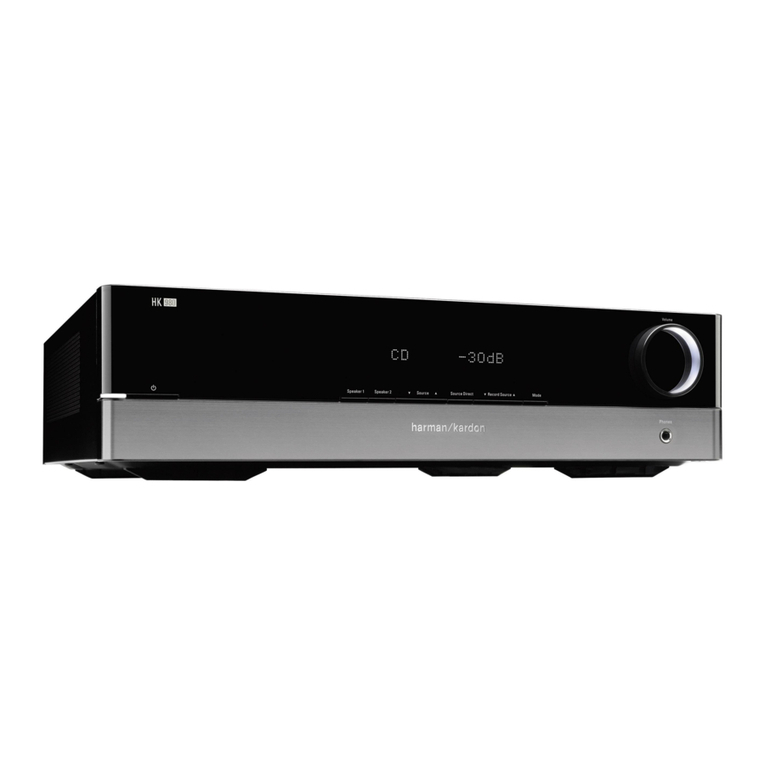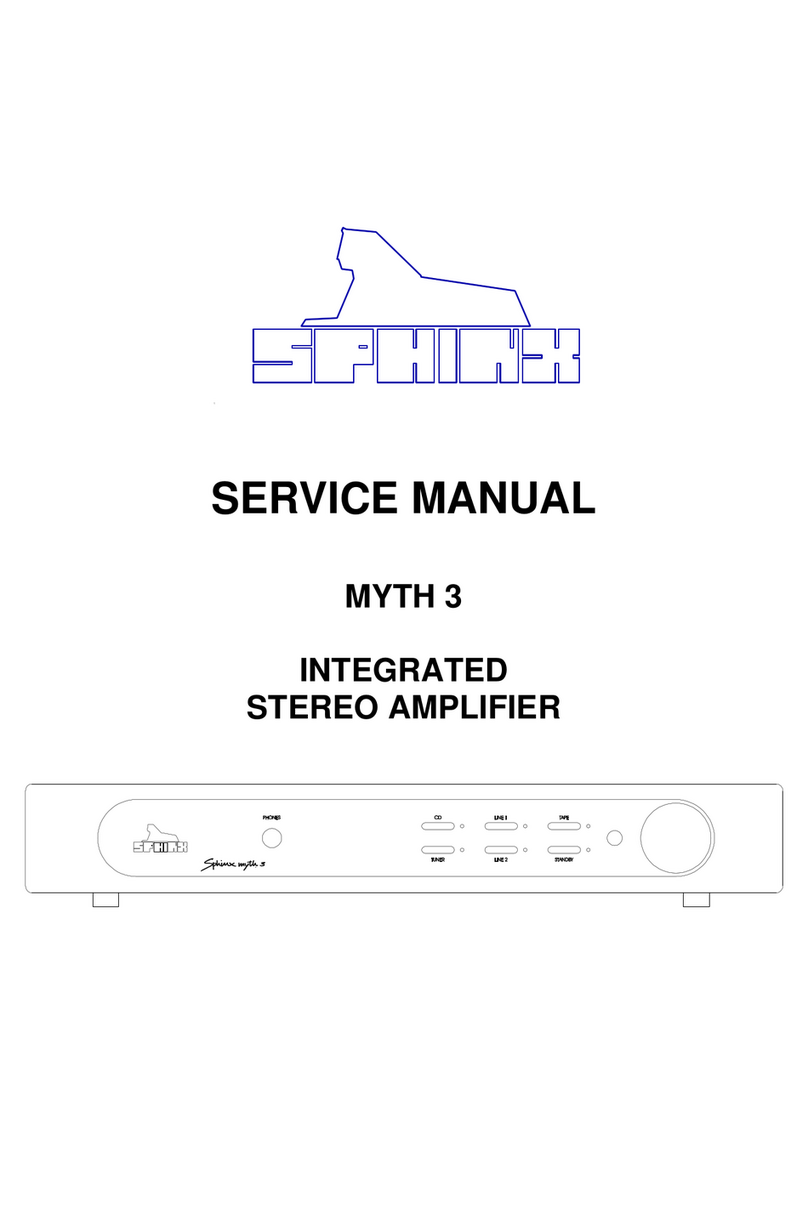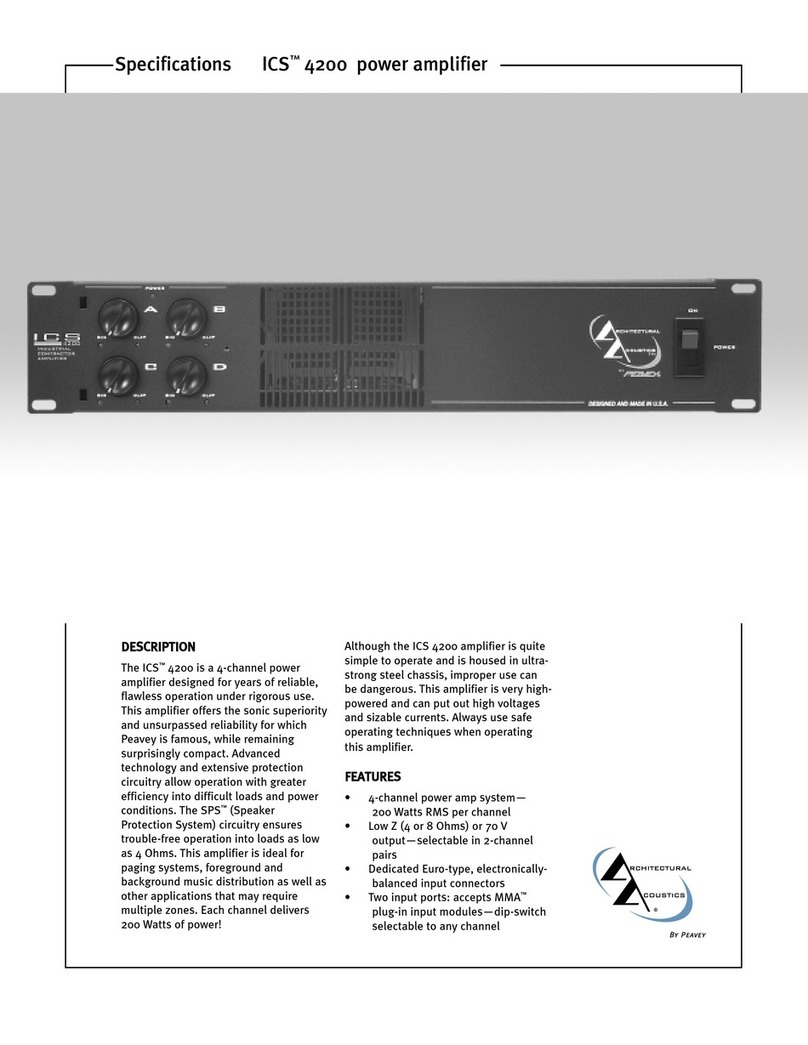Lint Audio KWELA TONES User manual

Headphone Amplifier
Type kt1 Kit assembly instructions
1
June 2020
http://www.lintaudio.co.za/gallery/kwelatones.pdf

2
Introduction
The Kwela Tones is a South African clone of a very renowned headphone amplifier originally designed by Pow
Chu Moy.
Why Kwela Tones ? Its made in a tin…Kwela is South African music made with a tin whistle ! So why not !
The headphone amplifier is designed around a dual-channel op amp such as TI s OPA1642 or TL 072 (page 31)
However, a wide variety of Op Amps have been successfully implemented. As the Op Amp directly drives
headphones some care should be given when choosing an op-amp, some op-amps are not suitable for such low
impedance loads and will result in poor performance.
A TL072 is supplied to experiment with and this is known as “rolling” (page31)
The amplifier's design is quite simple. It consists of only a few components, can be assembled on a small printed
circuit board, has a lower parts cost than other headphone amplifiers, and can run for many hours on two 9 volt
batteries. Our tests show at least 80 hrs on a set !
The CMoy headphone amplifier can be fitted into a Fisherman's friend tin and can often be found for sale in
Dischem. Other suitable tins are the Lindt chocolate heart shaped tin. Cigar boxes also work well.
A typical CMoy consists of two identical AC coupled non inverting amplifier circuits each with a 100kΩinput
impedance.
Power is supplied to the op amps using a dual power supply, which effectively divides the input voltage source in
half to create a virtual ground.

Contents
3
Part 1 –Operation
User guide
Headphone amplifier connection details
Use 2 x PP3 batteries
Part 2 -Kit Assembly
KWELA TONES Schematic
BOM
Overlay component by part number
Overlay assembly by component values
Soldering with examples of a dry solder joint
Cable “Left and Right” connections
Resistor component codes
Bending component leads
Capacitor codes
Preparing materials
PCB assembly
Preparing materials
Preparation of the tin for drilling (2 types of tin)
Pre assembly of tin before drilling
PCB assembly
Op Amp connections
Connect the audio output jacks
Connect cable to controls
Volume control connections
Now the cables
LED window
Testing
Before closing the lid, ensure nothing fouls, fit knobs and you are good to go….
Op Amp rolling
WARNING

Part 1-Operation
4
Thank you for purchasing a kwela tones headphone amplifier kit.
The
kwela tones
kt1 is designed to provide many hours of entertainment in usage.
The design has been developed primarily to enhance headphone sound performance.
Most headphones commercially available will function with the amplifier as the control
circuit uses high quality materials.
The unit is NOT a hifi amplifier and is not intended for such usage. It does however
perform exceptionally well with a normal MP3, cellular telephone or other audio source.
If using a Android cell phone, some outstanding DAC improver (digital to analogue
converter) music player apps are available in the play store. This will provide a
outstanding sound source.
Ensure all connected devices are earthed and use shielded cables. All connections to
be clean and corrosion free.

User guide
5
The kit is complete for the operation types as listed above, so purchase cables as required, these
are freely available.
Ensure batteries are fresh to ensure smooth sound quality, 2 x PP3, 9 volt type
Connect to the audio input device with the audio in socket
Use a high quality standard three pole AUX cable that are freely available
Connect headphones to the output socket, 3,5 mm 3 pole are fine
Your phone may have a app available that is a improvement over the standard audio output
Look for a app that is a DAC, this is a digital to analogue converter, this may improve the way sound
Is played by your cell phone.
NOTE
Avoid listening at too high a level to prevent hearing damage.
Enjoy your Kwela tones

Headphone amplifier connection details
Audio input 3,5 mm jack
ON/OFF Switch
Headphone socket
Volume control

7
Use 2 x PP3 batteries

Part 2 -Kit assembly
8
Tools required
It is expected that the kit builder has some soldering experience. Always use a fine tipped soldering iron.
It is not advisable to use a heavy industrial unit.
Use fine solder when assembling.
Some basic tools are required for assembly.
A soldering station, a small screwdriver, small side cutters, pointed nose pliers, a small craft knife and ruler.
A multimeter is advisable to check voltages and polarities. A drilling machine, a 1,5 mm drill bit, 7mm and 6 mm
drill bits are required. A small toothbrush and benzine to clean the pcb after soldering.
A smartphone will aid in determining left and right headphone connections when connecting.
Download a “left and right” app from aapp store as this makes it very simple to set the correct speaker
when assembled.
Benzine and a small toothbrush will be required to clean the printed circuit board when complete.
The kit is supplied as a complete package, the assembled kit works and has been in service.
It performs to expectations. Aenclosure is not provided.
When assembling, ensure that components are not overheated by poor assembly equipment.
When using soft solder, always wash hands before consuming foodstuffs, avoid contact with lead.

9
KWELA TONES Schematic

10
Notes
Op Amp may be changed to suit
Individual styles.
Batteries available from Clicks at
R45, Dischem are R39,00
Other tins maybe used or a
similar style enclosure.
CI and C6 maybe substituted to suit
Item Qty Ref Value Description Comments
1
2
C1,C6
3.3uF
Cap Bipolar
Maybe swopped out
2
2
C4,C5
470uF
Cap. Radial Electrolytic
3
1
D1
BL
-B6431-TK
LED 3mm RED
Cololur maybe changed
4
3
H1,H2,H7
2SIP100
Pin Header Single Row
Pads on PCB
5
4
H3,H4,H5,H6
3SIP100
Pin Header Single Row
Pads on PCB
6
2
R2,R7
100k
Carbon Film
7
2
R3,R8
1k
Carbon Film
8
2
R4,R9
10R
Carbon Film
Precision device
9
2
R5,R10
10k
Carbon Film
10
2
R11,R12
4k7
Carbon Film
11
1
R 13
6k8
Carbon Film
12
1
U1
TL072
Dual FET INPUT OP. AMP.
Maybe swopped out
14
1
R14
A10k
Dual Log PCB pot
15
1
KB1
Volume knob
16
1
S1
SPST on/off
17
2
SKT1/2
3.5 mm stereo jack socket
18
2
BATplug
PP3 Battery leads
19
2
PP3 batterys
Originals give 36 hrs
20
1
PCB1
PCB
21
1
V1
Vinyl sheet
Must be cut to size
22
1
0,2 mm red wire
23
1
0,2 mm orange wire
24
1
0,2 mm yellow wire
25
1
0,2 mm red wire
26
1
Solder wire
27
2
Spacer for knobs
28
1
Heat sleeve
29
1
Press stik
30
6
Cable ties
Optional
31
1
Red RCA socket
32
1
Black RCA socket
33
1
Siemens 1 uf
34
1
2,1 mm power socket
35
1
2700 uf capacitor (axial)
36
1
100 nf capacitor 100 v
37
1
Cable saddle
38
1
Capacitor plate
39
1
OPA 1642 (and adaptor)
40
1
Mtg plates with screws

11
Overlay component by part number

12
Overlay assembly by component values

Soldering with examples of a dry solder joint
13
Always ensure that the joint is not moved whilst
cooling, this will cause a matt finish. A shiny joint
will be correct joint.
Please ensure that you use a fine tipped soldering iron
DO NOT OVERHEAT JOINTS WHEN SOLDERING

Cable “Left and Right” connections
14
Ring right (red cable)
Tip left (white cable)
Barrel signal ground
Please note ! We have noticed some dodgy cables that
are swopped around..always test with a cell phone app to
confirm left and right.

Resistor component codes
15
If in doubt, always check values with a multimeter

Diode mounting
16
Bending a component lead
Take care when bending a component lead not
to damage the “die” of the component.
Always use pliers to prevent undue strain on the
die.
Always ensure a diode is correctly
Inserted to the PCB or the system
will not work.

Capacitor codes
17
Please note, the capacitors for input audio are electrolytic but non polarised
with the long leg as the positive known as non-polar
These are part numbers C1 and C6 value 3,3 uf or also known as 3u3
Power and capacitors are polarised electrolytic, the device is marked and the
long leg is always the positive
These are part numbers C4 and C5 value either 220 uf or 470uf

18
Preparing materials
The first stage is to prepare all materials ready for assembly, then you can focus on the assembly,
NOTE that the Lozenge tin needs to be marked carefully a similar tin to Fisherman's Friend is ideal
The PCB has to be separated as required, if using a wooden enclosure, 4 screw holes are provided

19
Preparation of the tin for drilling
Then apply masking tape to the tin and mark the positions of
each hole, mark the hole centre 9mm from the bottom.
from the bottom. Lightly centre punch each centre holes are as
per the labels, 7 mm for volume and 6mm for the switch. Mark
light hole as per your choice. (1,5 mm) Hole height from the
bottom is 9 mm
Spare labels are provided for this purpose.

20
Firstly lets mark the tin, the simplest way is to mark a sheet of white paper With the tins outside
dimensions on it. Then mark the matrix to drill holes.
Then apply labels to the tin and mark the
positions of each hole, mark the hole centre 9mm
from the bottom. Lightly centre punch each centre
Volume is 7 mm in the centre and the switch hole
and sockets are 6 mm
9 mm
Preparation of the tin for drilling
Table of contents
Other Lint Audio Amplifier manuals
